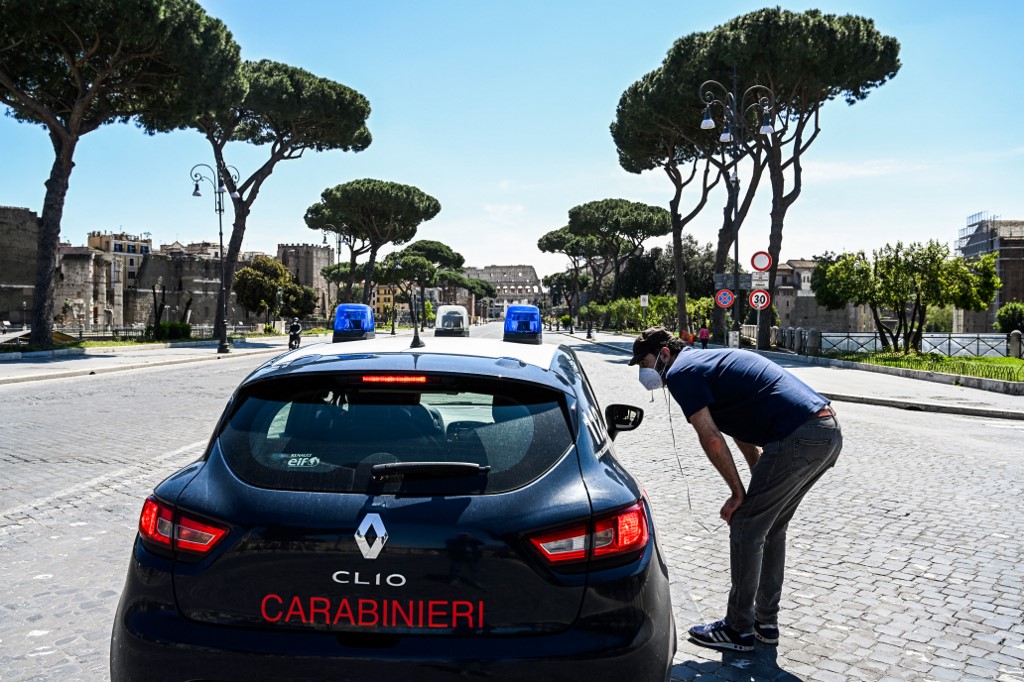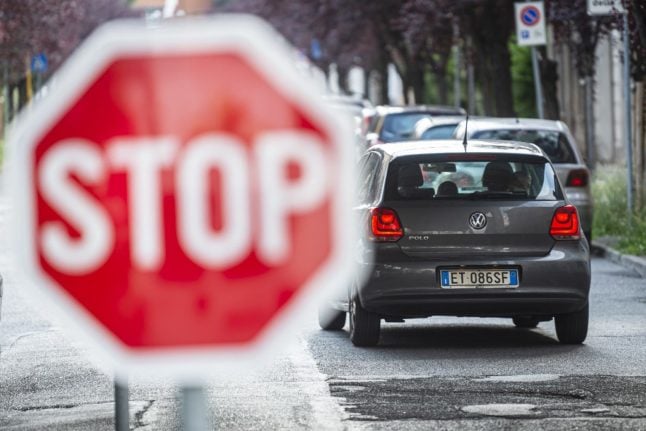Question: We want to go from Italy to the UK but it's proving very difficult, can we drive and go via France instead?
The short answer to this question is that it may be possible, but don't expect it to be easy – the trip will involve PCR tests, forms, restrictions and extra expense.
Here are the rules on travel from Italy to the UK. See the bottom of the page for details of the journey in the other direction.
Leaving Italy
If driving from Italy, the first step is assessing what the rules are on travelling out of your region or even your municipality, as movement in many areas is restricted.
Nine of Italy’s 20 regions are currently under higher-risk “orange” zone restrictions, while some towns and regions have also declared local 'red zones' amid a spike in coronavirus infections.
You can only enter or leave an orange or red zone for urgent reasons.
The regional classifications change weekly.
Italy currently has a nighttime curfew in place between 10pm-5am, during which all non-essential travel is prohibited.
To drive between provinces and regions to get to the French border in the first place, you'll need complete a self-declaration form, which you will need to show to police in case of a check.
The main justifications are for work, medical treatment, or for emergency reasons. You can also travel to return home.
You can download the form here.
Italy also currently has a ban in place on non-essential travel between all regions, regardless of zone. There are however no restrictions on passing through regions to get to somewhere else, so if you’re driving straight to the border this rule won’t affect your journey.
If you need to stop overnight in a region other than the one you’re resident in however, you should check which local restrictions are in place in that area. Rules often vary from one region and town to another.
READ ALSO: Where to find the latest Covid-19 information for your region of Italy

Photo: AFP
Crossing the French border from Italy
There are currently strict controls in place on the French-Italian border.
To enter France, you'll need to be able to show the result of a negative Covid-19 test carried out no more than 72 hours before departure.
This must be a PCR test, not one of the rapid-result antigen tests.
You will also need a completed travel certificate – the 'Attestation' – explaining your reason for travelling through the country.
Like in Italy the possible reasons are specific, such as for work, medical appointments or imperative family-related responsibilities. Be prepared to show proof to border guards.
You must also complete a sworn health declaration, which you can find here. There are different forms for those 11 years old and over and those under.
There is currently a curfew in France running from 6pm to 6am. If you intend to drive within these times then you will need to complete a Travel Exemption Certificate stating your reasons for travelling outside curfew hours.
You can find and download the certificate here.
It's only available in French, but if you want something in English you can download the TousAntiCovid app on your phone and present this to the authorities instead. Failure to have a filled-out form, or breaking curfew for a non-authorised reason, can result in a €135 fine.
Shops, apart from large malls, are open in France, so you'll be able to stop and buy food for your journey, however restaurants and cafés remain closed so if you want something more substantial, you'll have to get a takeaway.
Some hotels remain open, so if you need to stop overnight along the way, this will be possible.
Masks are compulsory in all indoor public spaces in France, as well as in the street for 400 towns, which includes all of the larger French cities.

Photo: AFP
Crossing to the UK
When you arrive at the ports, you may find limited ferry availability.
P&O Ferries are currently running services between Dover and Calais: check their Twitter page for updates on schedules. Brittany Ferries are only running one weekly service between Cherbourg and Portsmouth, however there may be more routes starting in March 2021.
Before arrival in the UK you must fill out a passenger locator form. You must also buy a travel testing package costing £210. This pays for you to get a Covid-19 test on day two and day eight of quarantining.
The test package must be booked before you start your journey. Full details can be found here.
When you arrive at the UK border, you'll be asked to show another negative PCR test, no older than three days and when you finally reach your destination, you'll need to quarantine for a total of 10 days.
For the moment, neither Italy nor France are on the UK's 'red list' so you can quarantine at home (you may want to check for updates to the red list before you depart).
Travelling to Italy from the UK
Unfortunately if you’re planning on driving to Italy from the UK this will prove even more complicated.
Entering France from any non-EU country requires a vital reason for travel from a pretty short list.
If you have residency in France or Italy, however, you are allowed to return home but be prepared to show proof of your residency status with a residency card or visa, plus tickets from your outward journey. This exemption does not apply to second home owners.
France has a quarantine in place for non-EU arrivals, but this does not apply to people transiting through.
Once you leave the UK and enter France, you'll have to show another negative PCR test and the same health declaration and travel certificate as described above.
EXPLAINED: What are the rules on travel between Italy and the UK?
Italy currently has its own tough restrictions in place on entering the country if you have been in the UK within the past 14 days, with the exception of those who are legally resident in Italy – whether or not they are Italian citizens – and those with essential reasons for travel, such as for work.
This restriction is due to concern about the spread of the UK coronavirus variant and it’s not known when the rule may be relaxed.
This means that once you get to the Italian border, you'll again have to show a negative PCR test no older than 72 hours, as well as proof that you have residency in Italy. (See more details on these rules in a separate article here.)
Italy also requires all arrivals from the UK to undergo a second swab test on arrival in Italy, and a 14-day period of mandatory quarantine (no matter what the test result).
If you’re travelling by car you must contact the health authority in the region you are in to arrange a test on arrival.
“Whatever the result of the two swab tests, those arriving in Italy from the UK must also report to their local health authorities on arrival and must self-isolate for 14 days,” the UK government website states.
“Everyone arriving in Italy must also call the Covid-19 helpline for the region you are travelling within 48 hours.”
All travellers to Italy also need to download and complete a self-declaration form from the Ministry of Foreign Affairs before travel.
You must give this form to your airline or to the border police if you are stopped for checks.
For more information on international travel to and from Italy, see the Foreign Ministry's website and check the restrictions in your destination country with the appropriate embassy.
The Local is not able to give advice on individual cases.



 Please whitelist us to continue reading.
Please whitelist us to continue reading.
Great information as always from The Local. Many thanks.
I think it would be easier to break out of prison.
Superb, thanks for the links
Thank you – very helpful links and information. Fingers crossed for my drive back to the UK next week.
Kanabeanz, how was the drive?
I really would find anyone’s experience of driving from the uk to Italy immensely helpful. How did you get your rapid flow tests to enable you to make the drive with all the paperwork?